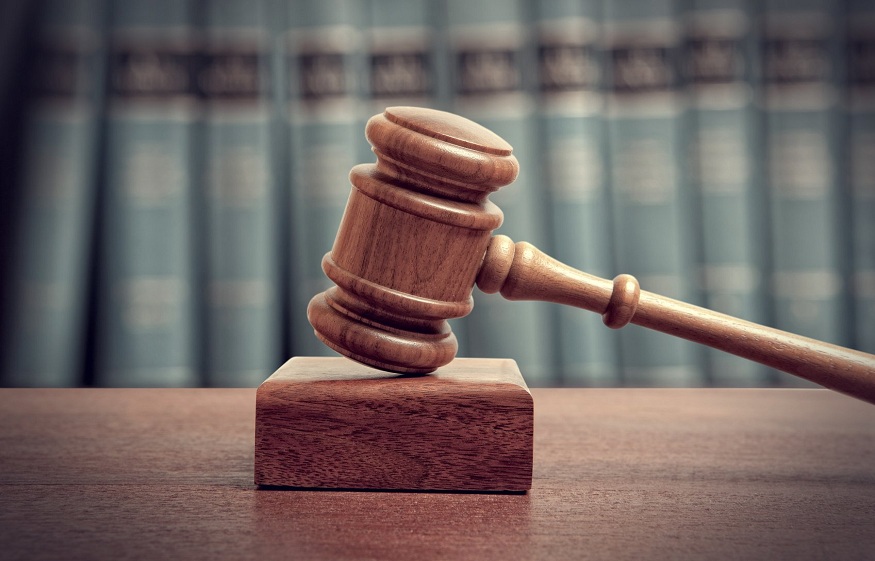
Are you tired of big corporations throwing their weight around and escaping accountability for the damages they cause? Well, it’s time to take a stand and fight for fairness! In today’s blog post, we delve into the world of energy litigation, where legal battles are waged to ensure that those affected by industry negligence receive proper compensation for their losses. Join us as we explore how these cases not only seek justice but also pave the way towards a more equitable future. Get ready to be inspired by stories of resilience, triumph, and the power of fighting for what is right. Let’s dive in!
Introduction to Energy Litigation
When someone is injured as a result of someone else’s negligence, they may file a personal injury lawsuit to recover damages. However, when the injury is caused by a defective product, the victim may have grounds for a products liability lawsuit. If the injury occurred on another person’s property, the victim may be able to file a premises liability lawsuit.
There are many different types of energy litigation, but most cases fall into one of three broad categories: personal injury, products liability, or premises liability.
Personal injury: This type of energy litigation arises when someone is injured as a result of someone else’s negligence. For example, if you are in a car accident caused by a drunk driver, you may be able to file a personal injury lawsuit against the driver.
Products liability: This type of energy litigation arises when you are injured by a defective product. For example, if you are injured by a defective car seat belt, you may be able to file a product liability lawsuit against the manufacturer of the seat belt.
Premises liability: This type of energy litigation arises when you are injured on another person’s property. For example, if you slip and fall on icy steps at your apartment complex, you may be able to file a premises liability lawsuit against your landlord.
What is an Energy Claim?
An energy claim is a legal action filed by an individual or business against a utility company for damages related to the loss of electrical power. This includes claims for personal injuries, property damage, and lost business income. The vast majority of these cases are settled out of court, but some do go to trial.
In order to have a valid claim, you must be able to prove that the utility company was negligent in some way and that this negligence led to your damages. For example, if a severe storm knocks out power to your neighbourhood and the utility company does not restore power within a reasonable amount of time, you may be able to file an energy claim.
If you are considering filing an energy claim, it is important to speak with an experienced attorney who can evaluate your case and help you understand your legal options.
Steps in the Energy Litigation Process
The first step in the energy litigation process is to consult with an experienced attorney to discuss your case and legal options. The next step is to gather evidence to support your claim, which may include expert testimony, photographs, and documents from the utility company. Once you have collected all of the necessary evidence, you will file a lawsuit against the utility company in state or federal court. The final step is to attend all court hearings and participate in mediation or arbitration, if necessary.
Types of Damages Covered in Energy Claims
There are many types of damages that can be covered in an energy claim. This includes physical damage to property, personal injury, economic losses, and environmental damage.
Physical Damage: This can include damage to homes, businesses, and other structures from fires, explosions, and other accidents. It can also include damage to equipment and machinery.
Personal Injury: This can include injuries suffered by people as a result of energy-related accidents. This can include burns, electrocution, radiation exposure, and more.
Economic Losses: This can include loss of income or business due to energy-related accidents or closures of businesses. It can also include the cost of repairs or replacement of damaged property.
Environmental Damage: This can include pollution and contamination of air, water, and land as a result of energy production or consumption. It can also include the loss of wildlife or habitat due to energy development.
The Benefits of Pursuing Energy Litigation
The oil and gas industry is a complex web of large companies, international organisations, and governmental entities. When something goes wrong in the production or transport of oil and gas, it can have serious consequences for the environment and the people who live nearby.
Energy litigation is a tool that can be used to hold the responsible parties accountable and ensure that they compensate those who have been harmed. Pursuing energy litigation can be complicated and expensive, but it can also be very rewarding. Here are some of the benefits of pursuing energy litigation:
1. You may be able to recover damages for your losses.
If you’ve been harmed by someone else’s negligence in the oil and gas industry, you may be able to recover damages through energy litigation. This could include reimbursement for medical expenses, lost wages, property damage, and more.
2. You can help prevent future accidents.
Pursuing energy litigation can help send a message to companies that they need to take safety seriously. In some cases, it may even lead to changes in industry practices that can help prevent future accidents from happening.
3. You can hold powerful entities accountable.
The oil and gas industry is often controlled by large corporations and other powerful entities. Pursuing energy litigation can level the playing field and ensure that these entities are held accountable for their actions (or inaction).
Common Hurdles Faced by Claimants
Most people are not familiar with the process of filing an energy claim or litigation. This can be a daunting task, especially when done alone. Here are some common hurdles faced by claimants:
1) Not knowing where to start – Many claimants don’t even know where to begin when it comes to filing an energy claim or starting litigation. They may feel overwhelmed and unsure of what steps to take next.
2) Lack of resources – Claimants may have difficulty gathering all the necessary documents and evidence needed to support their case. This can be especially challenging if they are not familiar with the energy industry or the legal process.
3) Time constraints – The energy industry is constantly changing, which can make it difficult for claimants to keep up with the latest developments. This can make it hard to build a strong case and meet deadlines set by the courts.
4) Financial considerations – Claimants may be concerned about the cost of pursuing an energy claim or litigation. They may worry about hiring an attorney or incurring other expenses associated with the process.
Case Studies and Examples of Successful Energy Litigation
The legal process can be a powerful tool for ensuring that those who have been harmed by the actions of energy companies are fairly compensated for their damages and losses. In many cases, litigation is the only way to hold these companies accountable and ensure that they take responsibility for their actions.
There are numerous examples of successful energy litigation that has resulted in fair compensation for victims of energy company negligence. One notable example is the 2010 Deepwater Horizon oil spill, which caused catastrophic damage to the environment and economy of the Gulf Coast region. After years of litigation, BP was finally ordered to pay $20 billion in damages to those affected by the spill.
Other examples of successful energy litigation include cases involving contaminated groundwater, toxic waste disposal, and air pollution. In each of these cases, victims were able to receive compensation for their damages thanks to the hard work of their attorneys and the power of the legal system.
If you or someone you know has been harmed by an energy company, don’t hesitate to contact a qualified attorney to discuss your case. With experienced representation, you may be able to get the compensation you deserve.
Conclusion
Energy litigation is a powerful and necessary tool for ensuring fairness in the energy sector. Through strategic use of this legal mechanism, people and businesses have been able to successfully demand compensation when they are wronged by others. It also helps keep the industry honest by making sure that companies adhere to their promises. The result is fairer outcomes for all parties involved and more accountability from those in power. In short, energy litigation plays an essential role in keeping everyone safe and protected from harm caused by negligence or misconduct.






